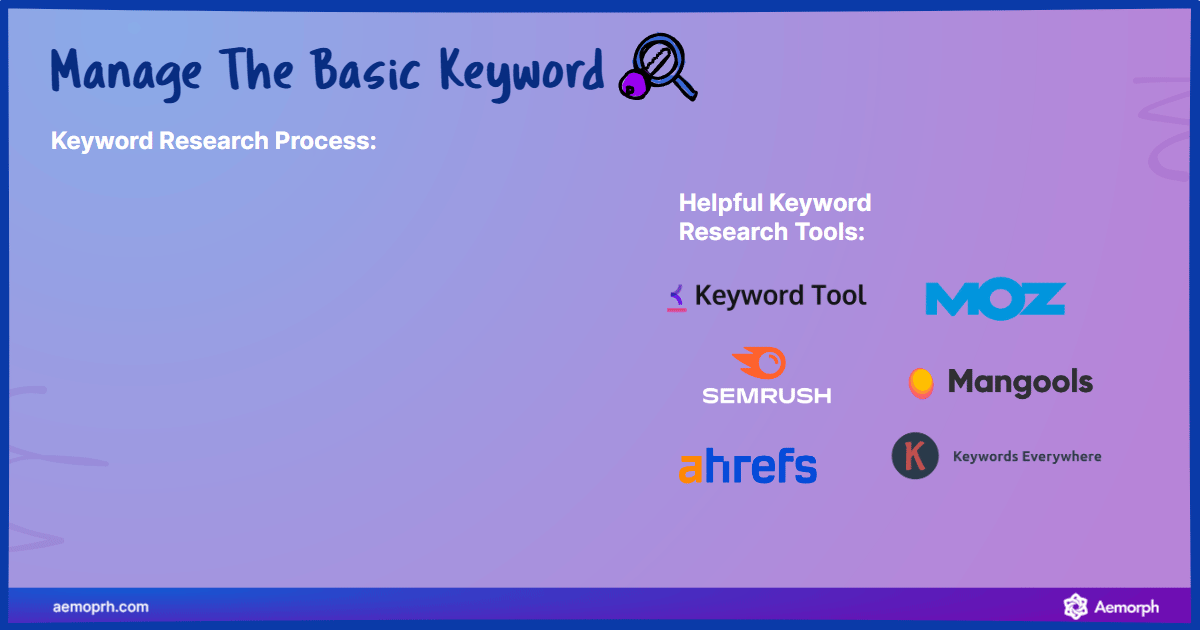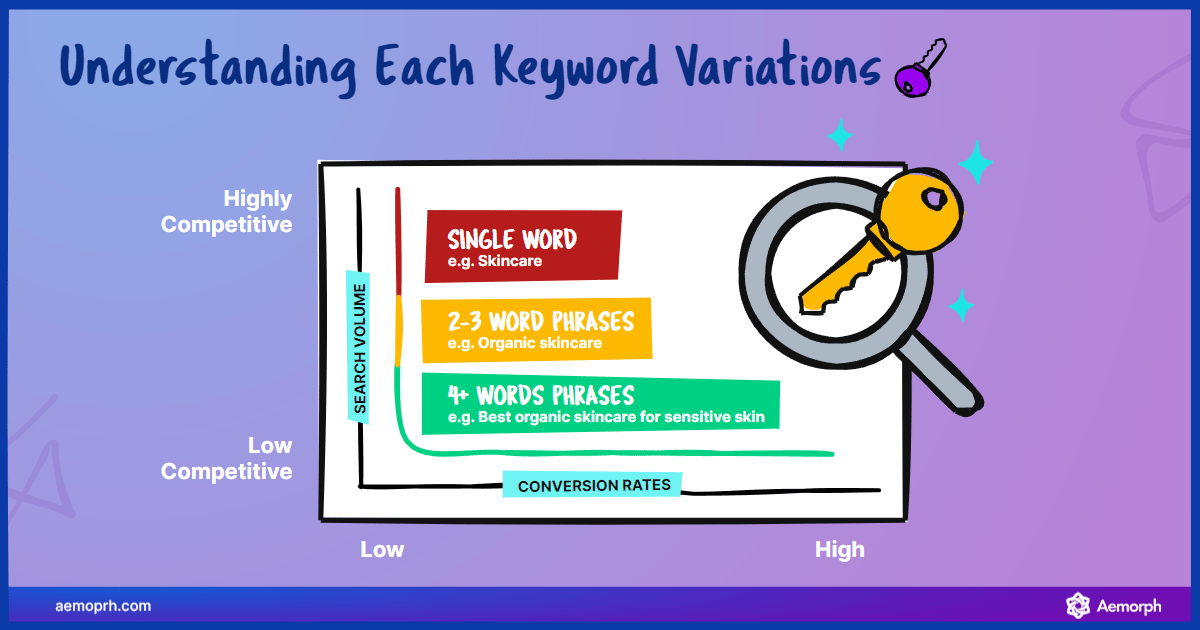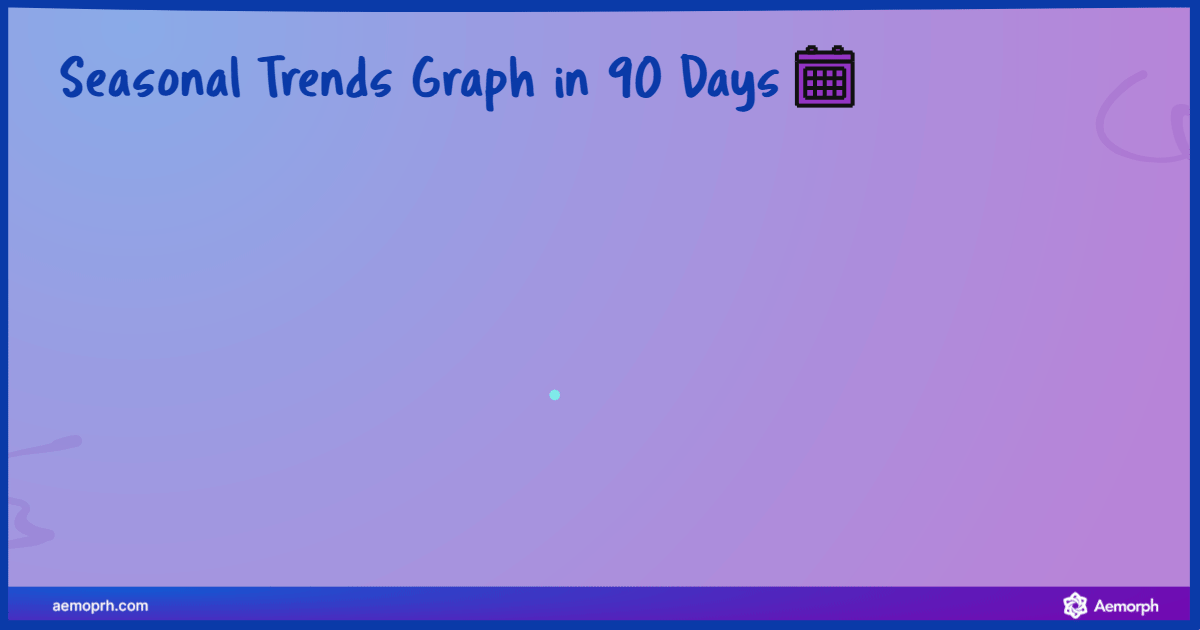Finding the perfect keywords isn’t just about choosing the most popular options; it’s about uncovering less obvious choices that can lead to substantial gains in website traffic. These hidden opportunities can represent a gold mine for SEO beginners and keyword research novices. Whether you’re looking to grow your blog, e-commerce site, or online portfolio, understanding how to find and leverage these keywords is important.
Aemorph works on numerous projects to boost your traffic by exploring various opportunities. From short keywords to long-tail keywords, we have designed each of our websites to enhance traffic through these hidden keyword opportunities. This post will help you take the step towards success. It is designed with you in mind, offering a beginner-friendly guide complete with 19 actionable steps. No prior SEO knowledge is required – just follow these steps, and you’ll be on your way to discovering hidden keywords and boosting your traffic growth.
Beyond the Obvious: The Power of Hidden Keywords for SEO Success (Without Feeling Lost)
Hidden keywords are the less conspicuous phrases that haven’t been tapped into extensively by the competition yet. Unlike the over-utilised broad terms, these hidden gems can lead to better search rankings and conversions due to less competition.
- Examples of Keyword Research and Hidden Keyword

(While doing research, you will be able to see that there are more keywords than what you are looking for)
>”Unearthing hidden keyword opportunities often leads to quicker wins and niche dominations.” – Jane Doe, SEO Expert.
Become a Keyword Veteran: 19 Actionable Steps to Find Hidden Gems
The journey to uncover hidden keywords that truly resonate with your targeted audience starts here. Below, explore 19 strategies that will steer you toward capturing these valuable search terms.
Step 1: Define Your Niche and Audience
Understanding who you’re speaking to and what you’re talking about is the first step in identifying relevant keywords that have been overlooked by others.
- Choose The Right Targeting

(While keywords can attach to any search intent, Understanding the audiences with keywords will help you target them much more easily and create more content about it)
Step 2: Survey Competitor Content
Inspect your competitors’ websites and spot any opening gaps that could be filled with unique keyword opportunities.
- Research On Competitor Content And Website

(Research your competitor will help you understand the target of your competitor and you will be able to plan your move on your target)
Step 3: Leverage “Related Searches” Features
Search engines can offer valuable hints with their “related searches” suggestions, opening doors to hidden keywords.
Related searches on Google provide eight related search terms, helping you refine your search and determine user intent.
- Related Search Or People Also Search Section

(Pay attention to related searches and people also search for actually create an idea for your content)
Step 4: Go Beyond Basic Keyword Tools
Advanced keyword research tools unlock a plethora of long-tail and related search term options that can reveal less obvious keyword opportunities.
- Manage The Basic Keyword

(Basic keywords have more steps to deal with, try to be flexible with that keyword so you can gain more idea out of that as well)
Step 5: Mine User Forums and Communities
Places like Reddit and Quora are gold mines for discovering the questions and topics your target audience cares most about.
- Finding Detail From Each Communities Platform

(Looking into variant communities will help you identify your keyword if it should be created in that media or not)
Step 6: Analyse Social Media Trends
Social media platforms are the pulse of current interests. Monitoring trends on these platforms can hint at emerging keyword potential.
- Researching On Trends In Media

(Doing some research on trends might take you some time but it is worth it since the idea you will gain from that will grow with the trend in media as well)
Step 7: Tap Into Industry News and Reports
Keep a finger on the pulse of your industry through news and reports to identify new keyword opportunities aligned with current trends.
- Go Beyond And Learn About Industry News

(Learning about industry news will help you grow more about the idea of researching your keyword)
Step 8: Focus on Long-Tail Variations
Long-tail keyword phrases are specific and less competitive, making them prime targets for a hidden keyword strategy. These keywords allow you to target niche demographics and are designed to better reflect how people make queries.
- Understanding Each Keyword Variations

(One keyword can expand into many variants by adding more intel into them and they will turn to long tail keywords slowly)
Step 9: Consider Local Search Opportunities
For businesses with a geographical focus, local-specific keywords can be a treasure trove of opportunities.
- Local Search Example

(Using local search will boost your traffic and help you reach the variant of important opportunities)
Step 10: Analyse Question-Based Keywords
Position your content to directly answer questions. This can help capture search intent more effectively and bring in organic traffic. Position your content to directly answer questions. This can help capture search intent more effectively and bring in organic traffic.
- Question-Based Keywords On Search Tools

(Most of the search tools will recommend a question-based keyword because most people will sometimes start with what, why and how)
Step 11: Utilise Synonyms and Related Terms
Expanding your keyword scope to include relevant synonyms and related terms widens the net for capturing search traffic.
- Learning How Different From Each Term
(Learning your term of search will give you more idea of creating content)
Step 12: Don’t Forget Semantic Keywords
Semantic keywords contextualise your main offering, connecting your content with broader audience interests. Semantic keywords are words or phrases that are conceptually related to a given keyword or topic. For example, “Italy” and “dough” are semantically related to “pizza.”
- Understand The Semantics of Keyword

(When searching for a keyword, you should pull out the potential of that keyword such as phrases that involve that keyword)
Step 13: Analyse Seasonal Trends
Adapt your content and keyword selection to the time of year, harnessing the power of seasonal search behaviours.
- Seasonal Trends Graph in 90 Days

(In 90 days you can notice the trend more than yearly since it’s happening lately, you can gather information based on these and create content on trend more easily)
Step 14: Look Beyond Traditional Keyword Metrics
Focus not just on search volume but also on the potential for conversion, relevance, and low competition levels.
- Keyword Metrics Using Keyword Research Tools

(Keyword research tools will give you metrics based on your keyword and trend each year, gather information on that and plan your next move)
Step 15: Experiment With Paid Keyword Research Tools
Consider budgeting for premium keyword research tools that provide deeper insights and comprehensive analytics.
- Keyword Research Tools Option

(Keyword research tools will give you a different opportunity and variant of uses)
Step 16: Collaborate With SEO Experts
Get professional insight by reaching out to SEO specialists who can help fine-tune your hidden keyword-finding process.
- Trusting SEO Specialists To Manage The Insight

(Choosing an SEO agency will give you a plan and create content based on their plan to boost your website and trust more easily)
Step 17: Monitor and Track Your Progress
Constantly review how your chosen keywords perform and be ready to adjust your strategy based on your findings.
- Track The Process And Plan The Move

(Tracking the metric is helping your plan with the content creation and keyword opportunities)
Step 18: Focus on Quality Content
Exceptional content is the vessel that carries your keywords to your audience – without it, even the best keywords won’t perform.
- Create Quality Content On Your Website

(Quality content boosting your trust with Google, not just detail but layout and design also count as a quality you have to check)
Step 19: Be Patient and Persistent
Rome wasn’t built in a day, and SEO is a long-term game. Keep refining your strategies, and success will follow. Keeping the tack slowly will surely make your content more known and valuable!
- Steady Grow And Be Patient With Your Work

(Numbers at the start never be bigger than the last, Be patient with your work and adjust them to make even more content in the future)
Go Find the Answer! Look for the Power of Hidden Keywords for Sustainable Traffic Growth
We’ve offered 19 powerful steps to help you uncover hidden keyword opportunities that can significantly amplify your website traffic. By diligently applying these strategies, your site can rise above the noise and draw in the audience it deserves. Remember, each hidden keyword is a stepping stone toward SEO success.









